Crop rotation is a time-honored agricultural practice that involves growing different types of crops in the same area over sequential seasons or years. This technique is not just about planting various crops; it strategically alternates the types of plants grown in specific fields to enhance soil health, prevent pests and diseases, and optimize crop yields naturally. In this article, we explore the fundamentals of crop rotation, its benefits, and practical tips for implementing it in your own garden or farm.
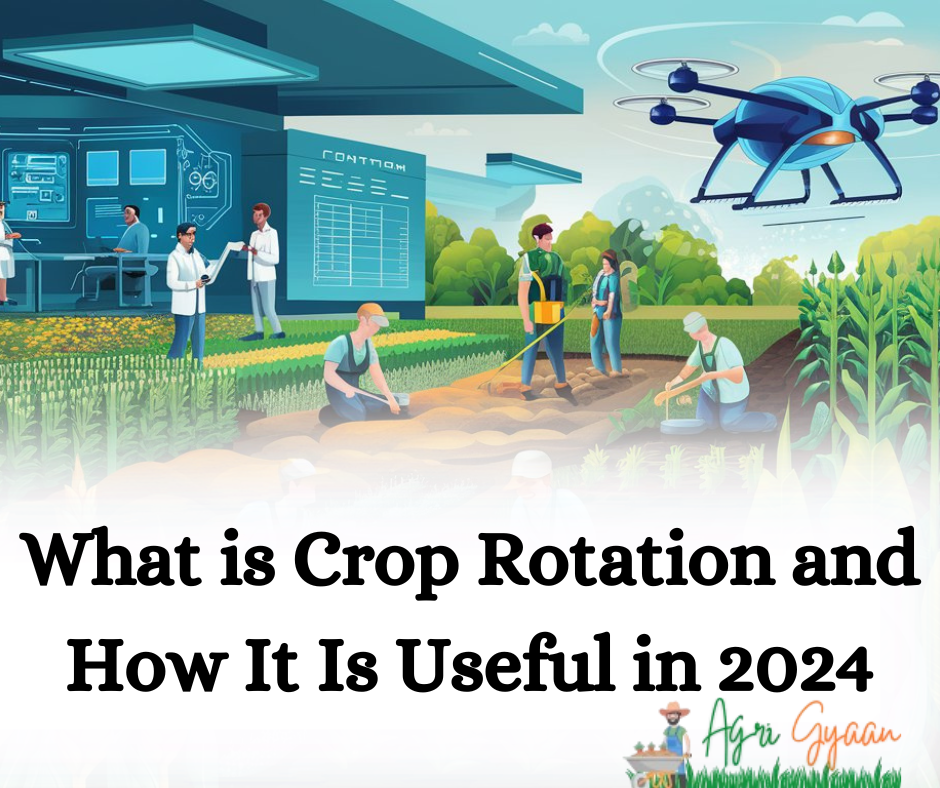
Introduction to Crop Rotation
Crop rotation is an agricultural practice that involves growing different types of crops in the same area across a sequence of seasons. This method is pivotal for sustainable farming as it helps in maintaining soil fertility, reducing soil erosion, and preventing plant diseases and pests.
Historical Background
The practice of crop rotation dates back to ancient civilizations. Historical records indicate that the Romans and Chinese used crop rotation to improve crop yields and soil health. During the medieval period in Europe, the three-field system became popular, which significantly enhanced agricultural productivity and food security.
Benefits of Crop Rotation
1. Soil Fertility: Different crops have varying nutrient requirements and contribute differently to the soil nutrient profile. For example, legumes fix nitrogen in the soil, enriching it for subsequent crops.
2. Pest and Disease Control: Rotating crops breaks the life cycle of pests and diseases that are specific to particular crops, thereby reducing their prevalence.
3. Improved Soil Structure: Different root systems and plant residues contribute to better soil structure and organic matter content.
4. Biodiversity: Crop rotation encourages biodiversity both above and below ground, promoting a more resilient ecosystem.
Common Crop Rotation Strategies
1. Two-Year Rotation: Often involves alternating between a nitrogen-fixing crop, like legumes, and a nitrogen-demanding crop, like cereals.
2. Three-Year Rotation: Includes three different crops, such as root vegetables, legumes, and grains, each contributing differently to soil health.
3. Four-Year Rotation: A more complex system that can include cereals, root vegetables, legumes, and leaf vegetables.
Implementation and Planning
Successful crop rotation requires careful planning and knowledge of the crops’ characteristics. Farmers must consider factors like soil type, climate, and market demand. Additionally, record-keeping of previous crop cycles is crucial for optimizing future rotations.
History of Crop Rotation
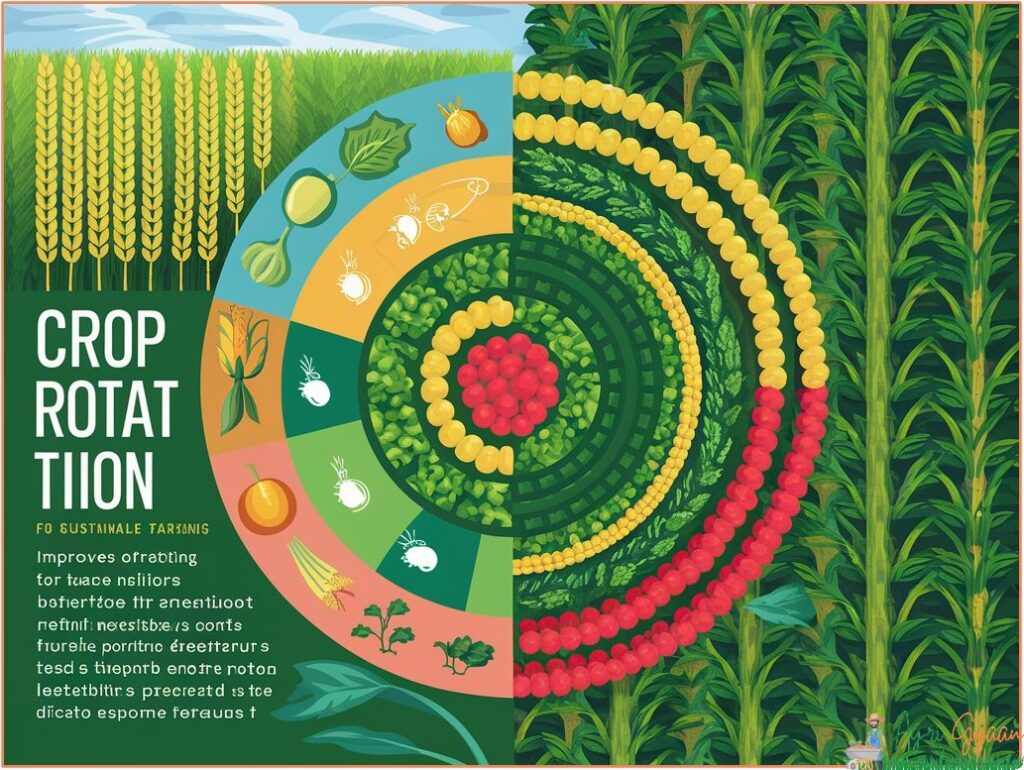
Ancient Beginnings
The origins of crop rotation can be traced back to ancient civilizations. The practice emerged as early farmers observed the benefits of alternating crops in the same field. Early agricultural societies in Mesopotamia, China, and Egypt utilized basic forms of crop rotation to improve soil fertility and crop yields. These early methods were driven by empirical knowledge passed down through generations, highlighting the intuitive understanding of soil health and crop management.
Roman Agriculture
The Romans significantly advanced crop rotation techniques. They developed a more systematic approach, integrating legumes like beans and peas into their crop sequences. These legumes were essential for their ability to fix nitrogen in the soil, a critical nutrient for plant growth. Roman agronomists like Columella documented these practices, providing insights into the benefits of crop rotation for soil fertility and pest management.
Medieval Innovations
During the medieval period in Europe, the three-field system became a cornerstone of agricultural innovation. This system divided the land into three parts: one planted with a winter crop, the second with a spring crop, and the third left fallow to recover its fertility. This method allowed for continuous farming without exhausting the soil. The three-field system increased productivity and supported population growth by ensuring a more reliable food supply.
Renaissance and Enlightenment
The Renaissance and Enlightenment periods saw further refinement of crop rotation practices. Agricultural reformers like Charles Townshend, also known as “Turnip Townshend,” popularized the four-field rotation system in England. This system included turnips, barley, clover, and wheat. Turnips and clover were particularly beneficial; turnips provided fodder for livestock, and clover, like other legumes, enriched the soil with nitrogen. This period marked a shift towards more scientific approaches to agriculture, incorporating principles of soil chemistry and plant nutrition.
Modern Developments
In the 19th and 20th centuries, the advent of synthetic fertilizers and pesticides led to a decline in crop rotation practices as monoculture farming became prevalent. However, the negative environmental impacts of monoculture, such as soil degradation and increased pest resistance, prompted a renewed interest in crop rotation. Today, modern agriculture embraces crop rotation as a sustainable practice. Advances in agricultural science have refined crop rotation techniques, allowing for more precise planning and better outcomes.
Global Perspectives
Crop rotation practices vary worldwide, influenced by local climates, soil types, and cultural traditions. In Asia, rice-paddy rotation with legumes is common, while in the Americas, maize-soybean rotations are widely practiced. Each region adapts crop rotation to its unique conditions, demonstrating the versatility and global applicability of this ancient practice.
Benefits of Crop Rotation
Crop rotation, the practice of growing different crops in the same area in sequential seasons, offers numerous benefits that contribute to sustainable and productive agriculture. Here are the key advantages:
1. Improved Soil Fertility
Nutrient Management: Different crops have varying nutrient requirements and contribute differently to soil nutrient levels. By rotating crops, especially including legumes that fix atmospheric nitrogen into the soil, farmers can naturally replenish essential nutrients, reducing the need for chemical fertilizers.
Organic Matter: Crop residues left in the field from diverse crops decompose and add organic matter to the soil, improving its structure, water retention, and nutrient-holding capacity.
2. Pest and Disease Control
Breaking Pest Cycles: Many pests and diseases are crop-specific. Rotating crops disrupts the life cycles of these pests and pathogens, reducing their population and minimizing the need for chemical pesticides.
Reduced Disease Pressure: Continuous planting of the same crop can lead to the buildup of soil-borne diseases. Rotating crops with different susceptibility to diseases helps in managing and reducing disease incidence.
3. Enhanced Soil Structure
Root Diversity: Different crops have different root systems. Deep-rooted crops like carrots or radishes help break up compacted soil layers, while shallow-rooted crops like grasses enhance soil structure and prevent erosion.
Erosion Control: Cover crops and crop residues protect the soil surface from erosion by wind and water, maintaining soil health and productivity.
4. Weed Management
Disrupting Weed Growth: Different crops compete with weeds differently. By changing the crops grown in a field, the growth patterns of weeds are disrupted, making it harder for any particular weed species to dominate.
Smother Crops: Some crops, like dense cereals or cover crops, can outcompete and suppress weeds, reducing their seed bank in the soil.
5. Improved Water Management
Optimized Water Use: Different crops have varying water requirements and rooting depths. Crop rotation can balance soil moisture levels and improve water infiltration and retention, reducing the need for irrigation.
Drought Resilience: Enhanced soil structure and organic matter improve the soil’s ability to retain moisture, making the land more resilient to drought conditions.
6. Biodiversity Enhancement
Ecological Balance: Crop rotation promotes biodiversity in the agricultural ecosystem. Diverse crops support a wider range of beneficial insects, soil microorganisms, and wildlife, contributing to a balanced and healthy environment.
Pollinator Support: Including flowering cover crops in rotations can provide habitat and food for pollinators, enhancing pollination services for subsequent crops.
7. Economic Benefits
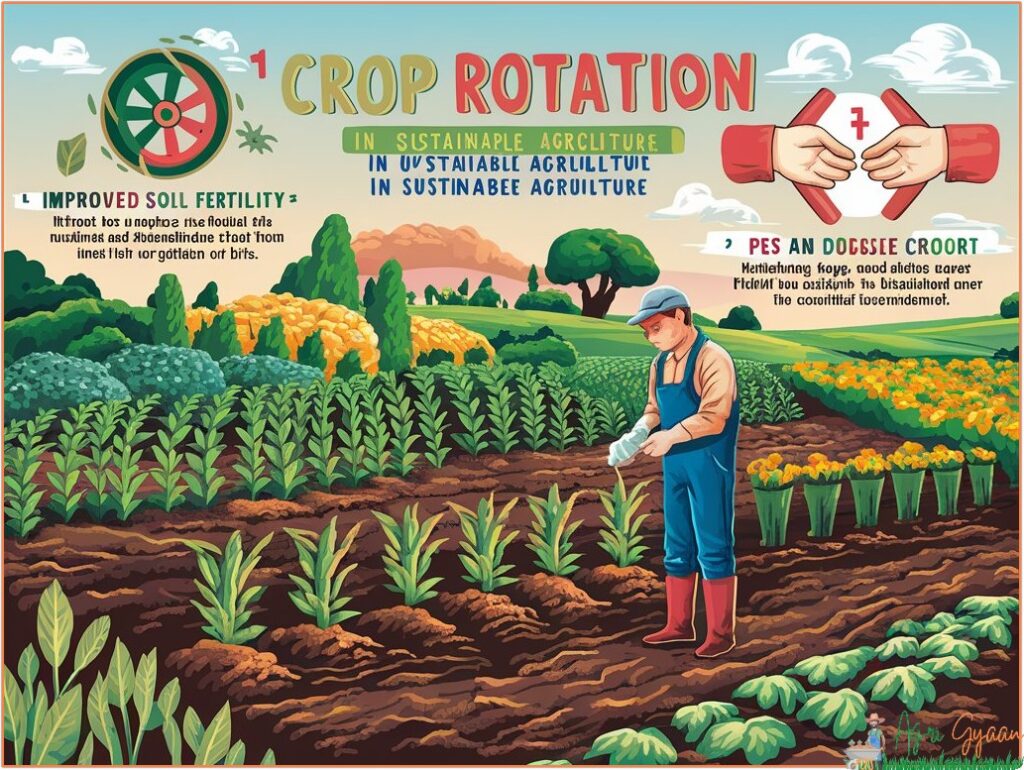
Yield Stability: By reducing pest and disease pressure and improving soil health, crop rotation can lead to more stable and potentially higher crop yields.
Cost Savings: Decreased reliance on chemical fertilizers, pesticides, and irrigation translates to cost savings for farmers.
Market Flexibility: Growing a variety of crops allows farmers to respond to market demands and price fluctuations, reducing economic risk.
Practical Examples of Benefits
1. Corn and Soybean Rotation: In a corn-soybean rotation, soybeans, a legume, fix nitrogen in the soil, benefiting the following corn crop that requires high nitrogen levels. This reduces the need for synthetic nitrogen fertilizers.
2. Wheat and Clover Rotation: Clover, a nitrogen-fixing legume, improves soil fertility for the following wheat crop. Clover also provides ground cover, reducing soil erosion and improving soil structure.
3. Vegetable Garden Rotation: Rotating leafy greens, root vegetables, and legumes in a home garden prevents soil nutrient depletion, reduces pest and disease buildup, and enhances overall garden health.
Types of Crops Used in Rotation
Crop rotation involves the systematic sequencing of different crops in the same area across different growing seasons. The choice of crops is critical for maximizing the benefits of rotation, such as improved soil health, pest and disease control, and enhanced yields. Here are the main types of crops used in rotation, categorized by their functional roles and benefits.
1. Legumes
Role: Nitrogen fixation and soil enrichment
– Examples: Beans, peas, lentils, soybeans, clover, alfalfa
– Benefits: Legumes have symbiotic relationships with nitrogen-fixing bacteria in their root nodules. These bacteria convert atmospheric nitrogen into a form that plants can use, enriching the soil with this essential nutrient for subsequent crops.
2. Cereals/Grains
Role: High nutrient demand and soil structure improvement
– Examples: Wheat, barley, oats, rye, maize (corn)
– Benefits: Cereals have extensive root systems that help improve soil structure and organic matter content. They are often rotated with legumes to take advantage of the nitrogen fixed by legumes.
3. Root Vegetables
Role: Soil aeration and nutrient uptake from different soil layers
– Examples: Carrots, radishes, turnips, beets, potatoes
– Benefits: Root vegetables break up compacted soil and bring nutrients from deeper soil layers to the surface, enhancing soil structure and fertility.
4. Leafy Greens
Role: Quick-growing and ground cover
– Examples: Lettuce, spinach, kale, cabbage
– Benefits: Leafy greens grow quickly and cover the soil surface, protecting it from erosion and suppressing weeds. They also have varying nutrient demands, making them suitable for inclusion in diverse rotations.
5. Brassicas
Role: Pest and disease management
– Examples: Broccoli, cauliflower, Brussels sprouts, mustard, canola
– Benefits: Brassicas produce compounds that can suppress soil-borne pests and diseases. Their inclusion in rotation can help break pest cycles and improve soil health.
6. Cover Crops/Green Manures
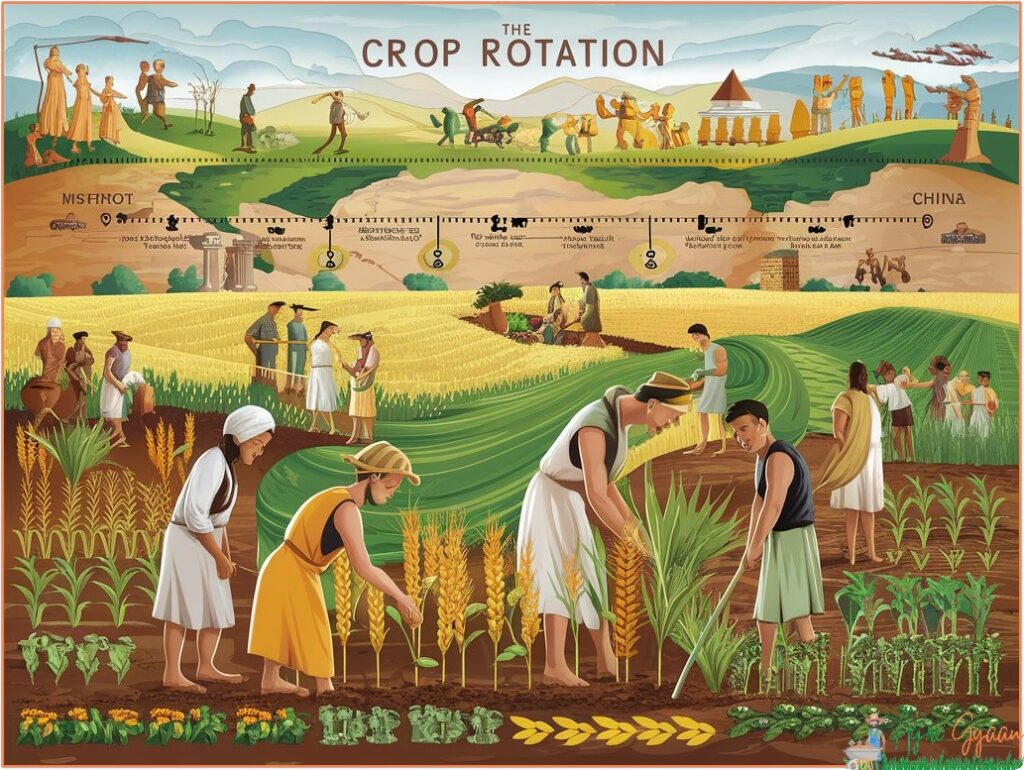
Role: Soil protection and organic matter addition
– Examples: Ryegrass, clover, vetch, buckwheat, rye
– Benefits: Cover crops are grown primarily to protect and improve the soil rather than for harvest. They prevent erosion, suppress weeds, and, when plowed back into the soil, add organic matter and nutrients.
7. Solanaceous Crops
Role: Diverse nutrient demands and pest cycle interruption
– Examples: Tomatoes, peppers, eggplants, potatoes
– Benefits: These crops are often rotated with non-solanaceous crops to prevent soil-borne diseases and pests specific to the Solanaceae family.
8. Cucurbits
Role: Diverse growth habits and soil health
– Examples: Cucumbers, melons, pumpkins, squash, zucchini
– Benefits: Cucurbits have sprawling growth habits that cover the soil, reducing weed growth and protecting the soil from erosion. They are rotated to manage soil health and nutrient use effectively.
Practical Rotation Examples
1. Three-Year Rotation (Legume, Cereal, Root Vegetable)
– Year 1: Soybeans (legume) to fix nitrogen
– Year 2: Wheat (cereal) to use nitrogen fixed by soybeans
– Year 3: Carrots (root vegetable) to improve soil structure
2. Four-Year Rotation (Leafy Green, Brassica, Legume, Cereal)
– Year 1: Lettuce (leafy green) to cover soil and prevent erosion
– Year 2: Broccoli (brassica) to manage pests and improve soil health
– Year 3: Alfalfa (legume) to fix nitrogen
– Year 4: Corn (cereal) to use nitrogen fixed by alfalfa
3. Market Garden Rotation (Cucurbit, Solanaceous Crop, Leafy Green, Cover Crop)
– Year 1: Pumpkins (cucurbit) to cover soil and suppress weeds
– Year 2: Tomatoes (solanaceous crop) to diversify nutrient demands
– Year 3: Spinach (leafy green) for quick growth and soil cover
– Year 4: Buckwheat (cover crop) to add organic matter and protect soil
Planning Your Crop Rotation Schedule
Planning a crop rotation schedule is crucial for maximizing the benefits of crop rotation, such as improved soil health, pest and disease control, and optimized yields. Here’s a step-by-step guide to help you plan an effective crop rotation schedule:
1. Assess Your Soil and Climate
Understand Soil Conditions:
– Test soil for nutrient levels, pH, and organic matter content.
– Identify any soil-borne diseases or pest problems.
Consider Climate Factors:
– Note your region’s climate, including temperature, rainfall, and growing seasons.
– Determine the best times for planting and harvesting different crops based on local conditions.
2. Define Your Crop Rotation Goals
Set Objectives:
– Improve soil fertility and structure.
– Manage pests and diseases.
– Optimize water use and minimize soil erosion.
– Enhance biodiversity and ecological balance.
Prioritize Crops:
– Decide on the main crops you want to grow based on market demand, nutritional needs, and personal preferences.
3. Choose Crops for Rotation
Select Diverse Crops:
– Include a mix of legumes, cereals, root vegetables, leafy greens, brassicas, and cover crops.
– Ensure crops from different families are included to break pest and disease cycles.

Consider Crop Characteristics:
– Legumes: Fix nitrogen (e.g., beans, peas).
– Cereals: High nutrient demand (e.g., wheat, maize).
– Root Vegetables: Improve soil structure (e.g., carrots, radishes).
– Leafy Greens: Quick-growing and cover soil (e.g., lettuce, spinach).
– Brassicas: Pest and disease management (e.g., broccoli, mustard).
– Cover Crops: Soil protection and organic matter addition (e.g., clover, ryegrass).
4. Develop a Crop Rotation Plan
Create a Rotation Cycle:
– Determine the length of your rotation cycle (e.g., 2-year, 3-year, 4-year).
– Plan the sequence of crops for each field or plot.
Example 2-Year Rotation:
– Year 1: Corn (cereal) – high nitrogen demand.
– Year 2: Soybeans (legume) – fix nitrogen for the next crop.
Example 3-Year Rotation:
– Year 1: Wheat (cereal) – moderate nutrient demand.
– Year 2: Clover (legume) – fix nitrogen and improve soil structure.
– Year 3: Carrots (root vegetable) – improve soil aeration.
Example 4-Year Rotation:
– Year 1: Lettuce (leafy green) – cover soil and prevent erosion.
– Year 2: Broccoli (brassica) – manage pests and improve soil health.
– Year 3: Alfalfa (legume) – fix nitrogen.
– Year 4: Corn (cereal) – utilize nitrogen fixed by alfalfa.
5. Implement the Rotation Plan
Prepare the Soil:
– Amend soil based on test results to correct pH and nutrient imbalances.
– Incorporate organic matter to improve soil structure.
Plant and Manage Crops:
– Follow your rotation schedule for planting and harvesting.
– Monitor crops for pest and disease issues, addressing problems promptly.
Use Cover Crops:
– Plant cover crops during off-seasons or between main crops to protect soil and add organic matter.
6. Maintain Records and Adjust
Keep Detailed Records:
– Track planting dates, crop varieties, yields, and any pest or disease issues.
– Note soil conditions and any amendments made.
Evaluate and Adjust:
– Review your rotation plan annually based on crop performance and soil health.
– Make adjustments as needed to improve outcomes and address any emerging issues.
7. Integrate Livestock (Optional)
Consider Livestock Integration:
– If applicable, incorporate livestock grazing into your rotation plan.
– Rotate pastures to manage manure and reduce pest pressure.
Benefits of Livestock:
– Livestock can help manage weeds and provide natural fertilization through manure.
Common Crop Rotation Mistakes
Crop rotation is a powerful tool for sustainable agriculture, but improper implementation can lead to reduced effectiveness and even negative outcomes. Here are some common mistakes to avoid when planning and executing crop rotations:
1. Inadequate Planning
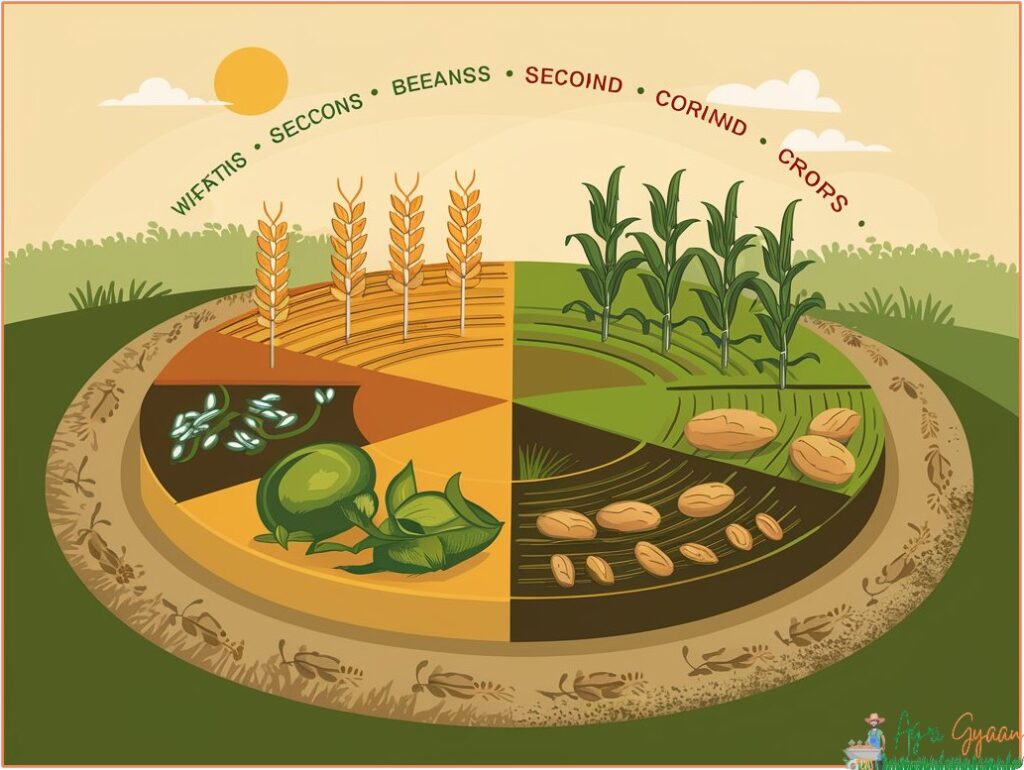
Mistake: Failing to plan a detailed crop rotation schedule.
Solution: Develop a comprehensive rotation plan that includes specific crops, planting and harvesting dates, and soil management practices. Consider soil health, pest and disease cycles, and market demands.
2. Ignoring Soil Testing
Mistake: Not testing soil regularly to understand its nutrient status and health.
Solution: Conduct soil tests at least once a year to monitor pH, nutrient levels, and organic matter content. Use the results to inform crop choices and soil amendments.
3. Repeating the Same Crop Too Often
Mistake: Planting the same crop or closely related crops in the same field consecutively.
Solution: Rotate crops from different families to prevent the buildup of pests and diseases specific to a particular crop. For example, follow a cereal crop like wheat with a legume like soybeans.
4. Overlooking Pest and Disease Cycles
Mistake: Not considering the life cycles of pests and diseases when planning rotations.
Solution: Research common pests and diseases for your crops and plan rotations that disrupt their life cycles. For instance, avoid planting susceptible crops in the same area until the pest or disease pressure has diminished.
5. Neglecting Cover Crops
Mistake: Failing to include cover crops in the rotation plan.
Solution: Integrate cover crops such as clover, ryegrass, or vetch to improve soil health, prevent erosion, and suppress weeds. Cover crops add organic matter and enhance soil structure.
6. Poor Record-Keeping
Mistake: Not maintaining detailed records of crop rotations, soil conditions, and yields.
Solution: Keep meticulous records of crop planting and harvesting dates, soil amendments, pest and disease observations, and yields. Use this data to make informed decisions and adjustments to your rotation plan.
7. Over-Reliance on One Crop Type
Mistake: Relying too heavily on a single crop type, which can lead to soil depletion and increased pest pressure.
Solution: Diversify your crop rotation to include a variety of crops with different nutrient requirements and pest resistances. This promotes soil health and reduces risk.
8. Ignoring Soil Erosion
Mistake: Not addressing soil erosion in the rotation plan, especially on sloped fields.
Solution: Use erosion-control practices such as contour planting, terracing, and planting cover crops to protect the soil. Rotate crops with good ground cover to prevent soil loss.
9. Inflexibility in Rotation Plans
Mistake: Sticking rigidly to a rotation plan without considering changes in soil health, pest pressure, or market demands.
Solution: Be flexible and willing to adjust your rotation plan based on ongoing observations and new information. Adapt to changing conditions to maintain soil health and optimize yields.
Crop Rotation in Organic Farming
Crop rotation is a foundational practice in organic farming, playing a critical role in maintaining soil health, managing pests and diseases, and enhancing crop productivity without relying on synthetic chemicals. Here’s an in-depth look at how crop rotation is implemented and its benefits in organic farming systems.
Importance of Crop Rotation in Organic Farming
1. Soil Fertility and Health
– Nutrient Management: Organic farming relies on natural processes to maintain soil fertility. Crop rotation helps by alternating crops with different nutrient needs and contributions. For instance, legumes add nitrogen to the soil, benefiting subsequent crops that require higher nitrogen levels.
– Organic Matter: Rotating crops ensures varied root systems and organic residues, which improve soil structure and organic matter content.
2. Pest and Disease Control
– Disrupting Pest Cycles: Many pests and diseases are crop-specific. Rotating crops breaks their life cycles, reducing their populations and minimizing outbreaks without synthetic pesticides.
– Diverse Planting: A varied crop rotation reduces habitat favorability for pests and diseases, promoting a more balanced ecosystem.
3. Weed Management
– Suppressing Weeds: Different crops have different canopy structures and growth rates, which can suppress weeds through competition. Cover crops can also smother weeds and reduce their seed bank in the soil.
– Mechanical Control: Organic farming often uses mechanical methods for weed control, and rotating crops can help manage weeds more effectively by varying tillage practices.
4. Enhanced Biodiversity
– Promoting Biodiversity: Crop rotation increases plant diversity on the farm, which supports a wider range of beneficial insects, soil organisms, and wildlife. This biodiversity is crucial for a resilient and sustainable farming system.
– Habitat Creation: Including flowering plants and cover crops in rotations provides habitats for pollinators and other beneficial organisms.
Implementing Crop Rotation in Organic Farming
1. Planning the Rotation
– Identify Goals: Determine what you aim to achieve with your rotation (e.g., soil fertility, pest control, weed management).
– Choose Crops: Select crops based on their roles (e.g., nitrogen fixers, deep-rooted crops, cover crops). Consider market demands and your farm’s specific conditions.
2. Designing the Rotation Cycle
– Two-Year Rotation Example:
– Year 1: Corn (high nitrogen demand)
– Year 2: Soybeans (nitrogen-fixing legume)
– Three-Year Rotation Example:
– Year 1: Wheat (cereal)
– Year 2: Clover (legume and cover crop)
– Year 3: Carrots (root vegetable)
– Four-Year Rotation Example:
– Year 1: Lettuce (leafy green)
– Year 2: Broccoli (brassica)
– Year 3: Alfalfa (legume)
– Year 4: Corn (cereal)
3. Utilizing Cover Crops
– Benefits: Cover crops protect the soil, add organic matter, fix nitrogen, and suppress weeds. Examples include clover, vetch, and ryegrass.
– Timing: Plant cover crops during off-seasons or between main crops. They can be tilled into the soil as green manure or left as mulch.
4. Monitoring and Adjusting
– Record-Keeping: Maintain detailed records of crop sequences, soil conditions, pest and disease occurrences, and yields.
– Flexibility: Be prepared to adjust your rotation plan based on observations and changes in soil health, pest pressures, and weather patterns.
Benefits of Crop Rotation in Organic Farming
1. Sustainable Soil Management
– Enhances soil structure, fertility, and organic matter content.
– Reduces reliance on external inputs like synthetic fertilizers.
2. Effective Pest and Disease Management
– Minimizes pest and disease outbreaks through natural disruption.
– Reduces the need for organic pesticides and other interventions.
3. Weed Suppression
– Limits weed growth and reduces the weed seed bank.
– Supports mechanical and cultural weed control methods.
4. Environmental and Economic Benefits
– Promotes biodiversity and ecosystem health.
– Can lead to more stable and potentially higher yields.
– Reduces costs associated with synthetic inputs.
Conclusion
In conclusion, crop rotation stands as a fundamental principle of sustainable agriculture, playing an essential role in enhancing the overall health of soil, boosting crop yields, and contributing to environmental conservation efforts. This agricultural practice involves the strategic planting of different crops in a sequential manner across the same land over various growing seasons. By diversifying the types of crops cultivated, farmers and gardeners can effectively break pest and disease cycles, reduce soil erosion, and improve nutrient availability in the soil.
The benefits of crop rotation extend beyond mere agricultural efficiency; they also include significant ecological advantages. Healthy soil, rich in organic matter, can support a diverse array of microorganisms that contribute to nutrient cycling and soil structure. This leads to increased water retention and reduced need for chemical fertilizers, thereby minimizing the environmental footprint of farming practices.
